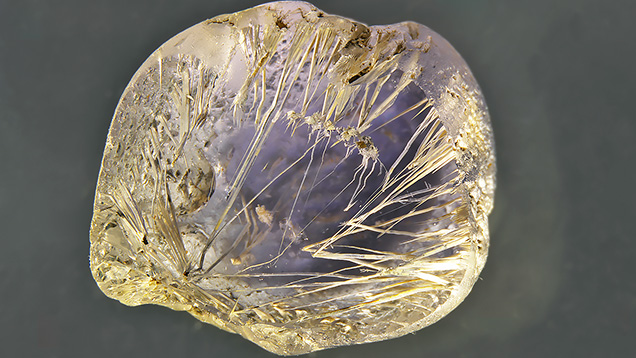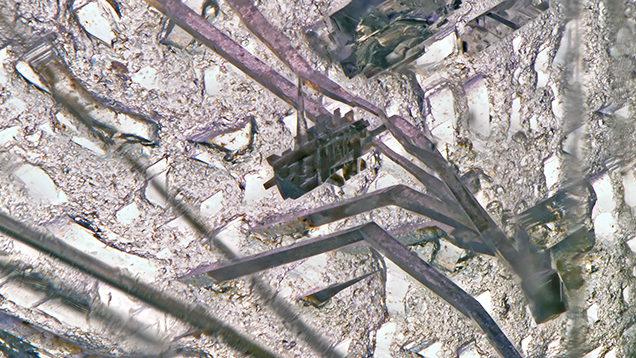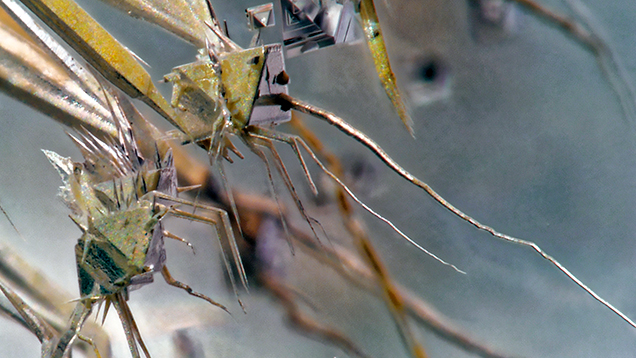Etch Marks, Negative Crystals, and Etch Tubes in Spinel from Madagascar

During a recent study of blue sapphires from the Ilakaka region in Madagascar, the authors discovered a stone with an unusual appearance. Mixed in a parcel of blue sapphires purchased from Malagasy sapphire miner Nirina Rakotosaona was a 2.18 ct blue pebble (figure 1). RI (1.718) and SG (3.62) measurements identified it as a spinel. Mr. Rakotosaona had mined these stones near Antsoa village, along the Taheza River. Magnification revealed numerous triangular etch marks on the surface, which is not uncommon for spinel (Summer 2004 Lab Notes, p. 168). The frosted surface of the stone made it difficult to study its internal features, so we polished a window in order to observe them.
What we found was a spectacular internal world, with several well-developed negative crystals associated with etch tubes (figure 2). These etch features were characterized by a narrowing of the tubes toward the center of the crystal, indicating that they were produced by dissolution of spinel after the crystal had formed. This preferential dissolution was located at weaker structural zones in the spinel, which might be related to the presence of the negative crystals.

While all the negative crystals were aligned and had the overall classic octahedral form for spinel, they also showed modifications such as twinning and short stubby etching (figure 3). The etch tubes radiated outward from these negative inclusions or passed through them. Etch tubes are well known in sapphires from Madagascar, but this stone shows they can also be found in blue spinels from the island. It was this etching that made for one of the most interesting inclusion scenes the authors have encountered.




